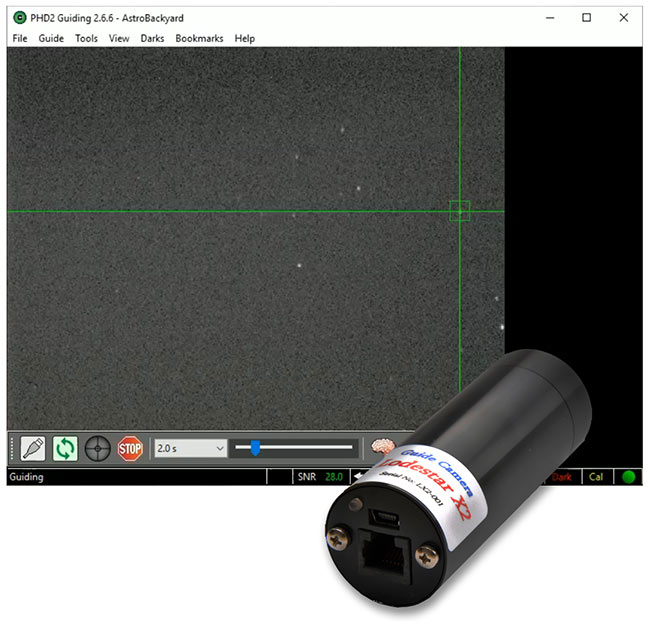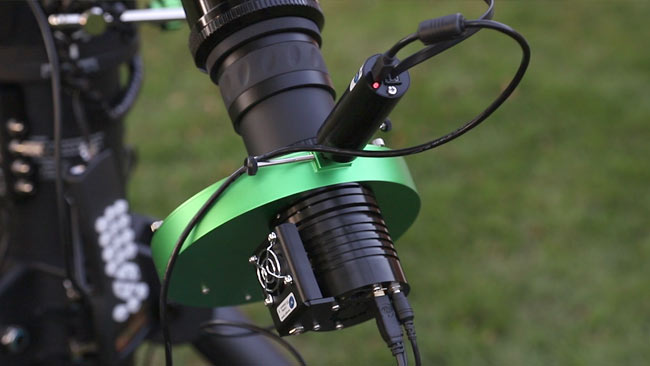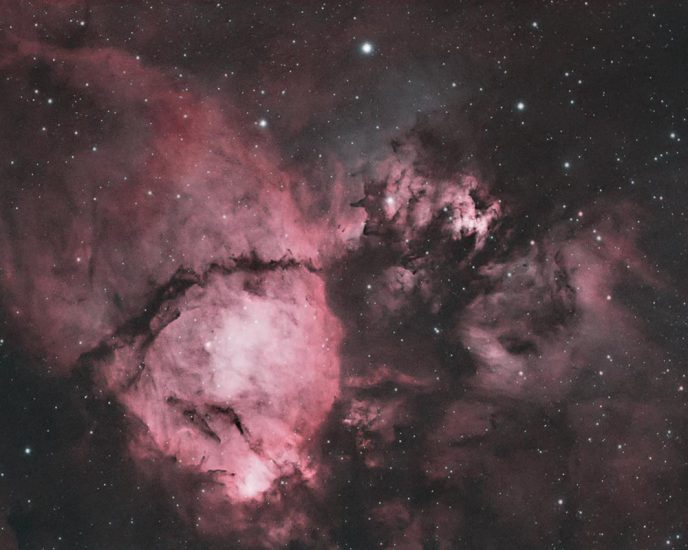Starlight Xpress Lodestar X2 Autoguider
The Starlight Xpress Lodestar X2 Autoguider is a popular guide camera for deep-sky astrophotography. In fact, the original Lodestar was considered to be the best autoguider on the market for a long time.
The X2 version is the successor to the original Starlight Xpress Lodestar autoguider and uses a Sony ICX829 Exview sensor. It is the most sensitive compact guide camera Starlight Xpress has to offer.
In this post, I’ll share my experiences using the Starlight Xpress Lodestar X2, and the images I’ve been able to capture using the autoguiding capabilities of the camera.
The Starlight Xpress Lodestar X2 autoguider used with a filter wheel and off-axis guider.
If you are new to astrophotography chances are you will eventually invest in an autoguiding system to help improve your telescope mounts tracking abilities and utilize powerful imaging techniques such as dithering.
Eventually, the process of autoguiding is something that basically happens in the background. PHD2 guiding communicates with your telescope mount and sends subtle, yet important pulse corrections to the RA and DEC axes of the mount.
A guide camera has a very important job to do, display a useful array of guide star options through the guide scope (or OAG). A capable guide camera will reveal several candidates that exhibit the features of the perfect guide star. This mainly includes being the right size for optimal saturation.
The Starlight Xpress Lodestar X2’s ultra-sensitive 752 x 580-pixel sensor has low readout noise, which makes finding a suitable guide star exceptionally easy.
Starlight Xpress Lodestar X2 Autoguider
Guide cameras like the Lodestar X2 can be used with an auxiliary guide scope riding on top of the imaging telescope, or with an off-axis guider (OAG). The process of autoguiding your telescope mount is done using software such as PHD2.
Over the years I have used a number of cameras for autoguiding, with the Starlight Xpress Lodestar X2 being the latest (and most advanced) model I’ve ever used.
I used the Starlight Xpress Lodestar X2 to autoguide with a Sky-Watcher EQ8-R Pro mount, and the results were impressive. The built-in RJ12 autoguider port on the Lodestar X2 connects directly to the autoguide port on the mount without any additional adapters.
The Lodestar X2 connects to my astrophotography laptop via a mini USB cable and the USB port on my PC. I control the Lodestar X2 using PHD2 guiding and the necessary Starlight Xpress drivers.
Suggested Settings
Upon the arrival of the Lodestar X2, I did some research online to find the best settings to use in the field. I stumbled upon this thread in the Stargazers Lounge forum.
Hopefully, the screenshot below provides you with some useful settings to try out, including the recommended fixed binning (2X2) setting the settings window checks by default. These are the exact settings I have used with the Lodestar X2 to autoguide my images shared in this article.
Recommended Settings for the Lodestar X2.
Lodestar X2 Specifications
- Diameter: 1.25″
- Weight: 1.76 ounces
- Back focal distance: 12.5mm
- Sensor: Sony ICX829 EXview HAD
- Sensor Type: CCD
- Sensor Dimensions: 6.52mm x 4.89mm
- Sensor Diagonal: 8mm
- Pixel Array & Resolution: 752 x 582 pixels (0.4 MP)
- Pixel Size: 8.2 um x 8.4 um
- Imaging Area: 6.45mm x 4.75mm
- Autoguider Port: RJ12
- Power Input: USB Powered
Helpful Resources:
- View the Lodestar X2 Manual
- Download the Latest Starlight Xpress Drivers
- Download PHD2 Guiding Software (Compatible with the Lodestar X2)
While reading the manual, I was surprised to find out that Starlight Xpress has their own autoguiding software to run their guide camera. I have not tried this software myself, and would recommend using PHD2 Guiding instead, especially if you want to use features like dithering alongside your image capture software (such as Astro Photography Tool).
Results Using the Lodestar X2 Autoguider
I have used the Lodestar X2 with the Starlight Xpress Trius 694 (mono) exclusively. When using this configuration with the Starlight Xpress Midi filter wheel and off-axis guider, I experienced some of the best guiding results using PHD2 Guiding I have ever had.
Here are some of the images shot using the Lodestar X2 for autoguiding:
The Tadpoles Nebula in Auriga.
The Fish Head Nebula in Cassiopeia.







